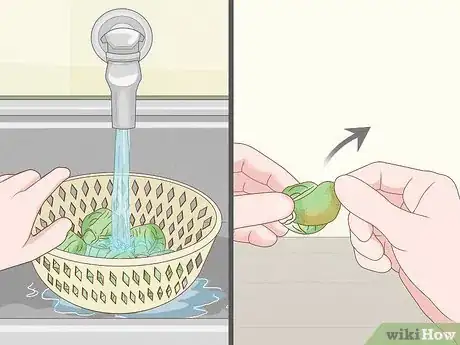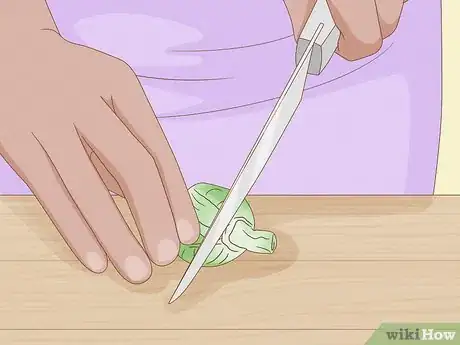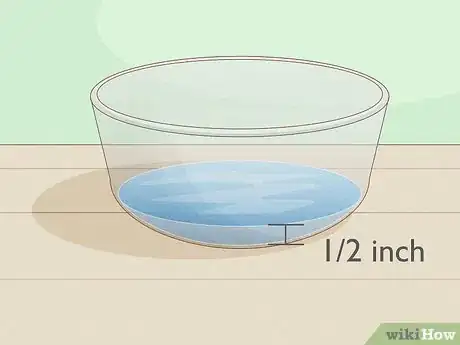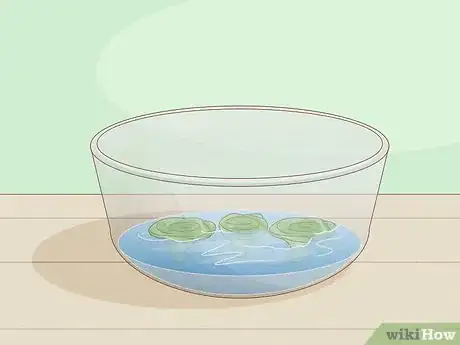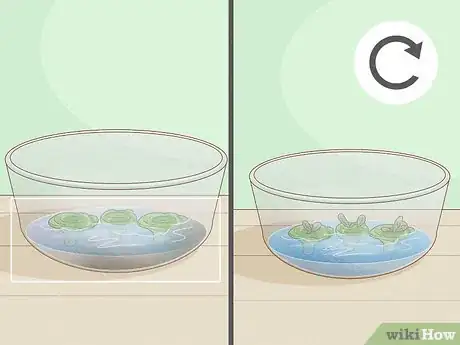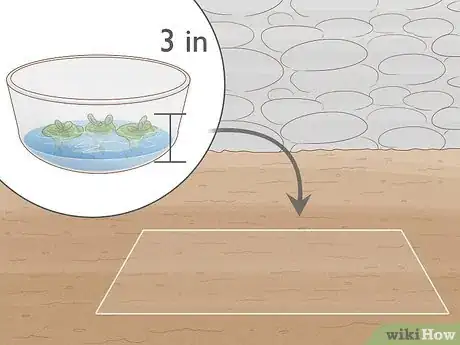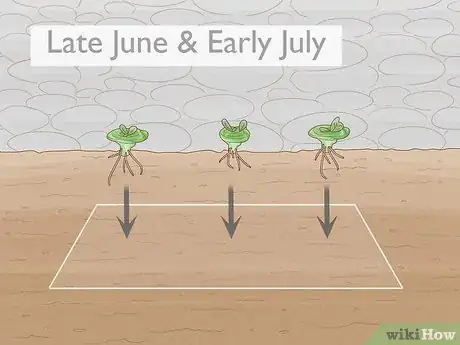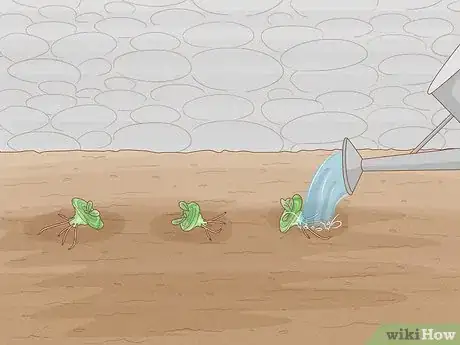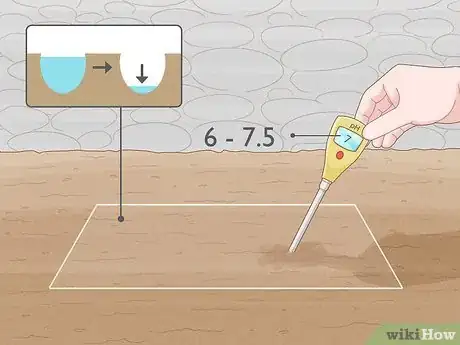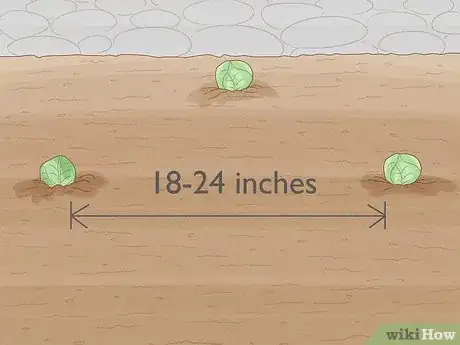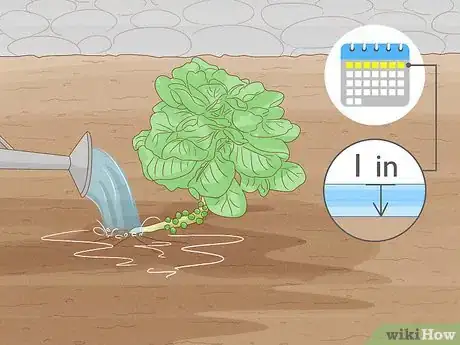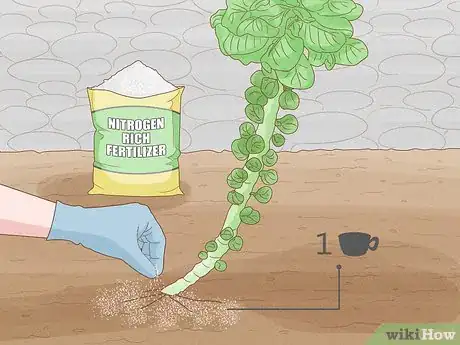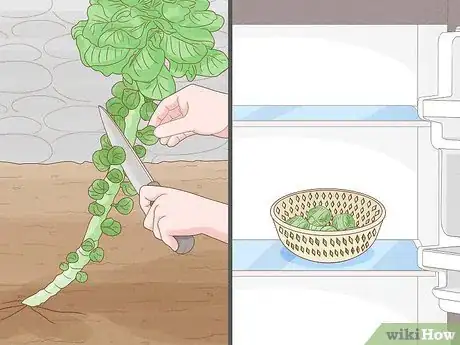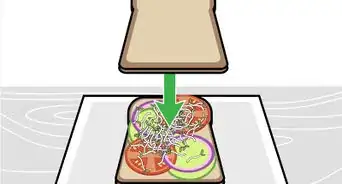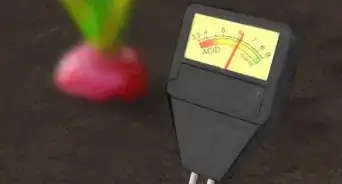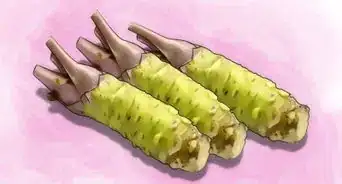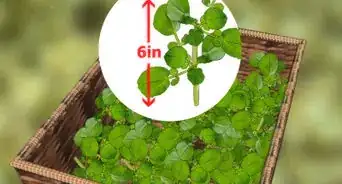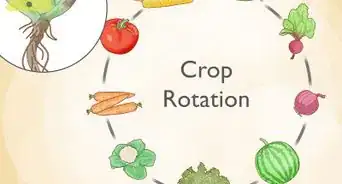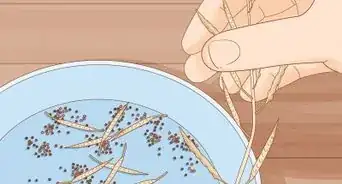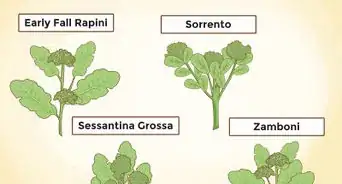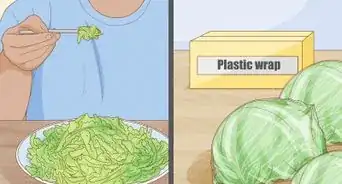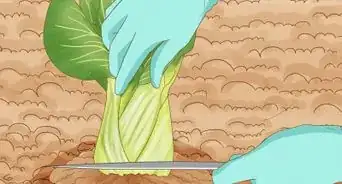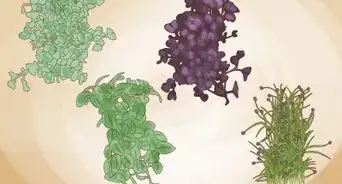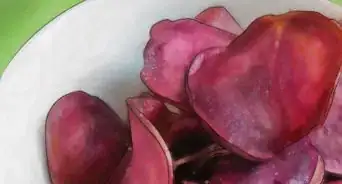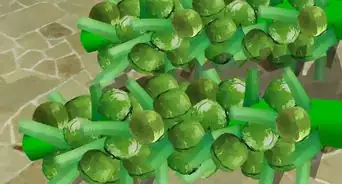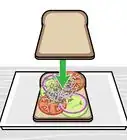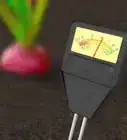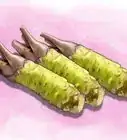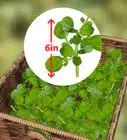This article was co-authored by wikiHow staff writer, Janice Tieperman. Janice is a professional and creative writer who has worked at wikiHow since 2019. With both a B.A. and M.A. in English from East Stroudsburg University, she has a passion for writing a wide variety of content for anyone and everyone. In her free time, you can find her working on a new crochet pattern, listening to true crime podcasts, or tackling a new creative writing project.
There are 11 references cited in this article, which can be found at the bottom of the page.
This article has been viewed 61,114 times.
Learn more...
A lot of home gardeners claim that you can regrow Brussels sprouts from cuttings at home. While there’s not a lot of evidence out there to support these claims, you can still give this experiment a try on your own! Since Brussels sprouts are typically an autumn crop, you’ll have more luck if you hit the ground running in May or June.[1]
Steps
Cutting and Regrowing
-
1Wash your Brussels sprouts and peel away any dead leaves. Rinse your sprouts over the sink to get rid of any leftover dirt and grime. Then, check the bottom of each sprout and peel away any yellowing or dead leaves. You can use fresh, store-bought Brussels sprouts for this!
- Since Brussels sprouts are harvested in autumn, it’s best to get the ball rolling in May or June.[2]
- There isn’t a lot of published evidence out there that sprout cuttings will regrow into a full Brussels sprout plant. In some experimental gardening, some amateur gardeners noticed that individual Brussels sprouts can develop a root system on their own. You’re welcome to give it a try![3]
-
2Cut off the bottom of a Brussels sprout. Slice of the flat, bottom portion of your Brussels sprout. Your sprout will develop roots from the bottom of this cutting.Advertisement
-
3Fill a container with 1⁄2 in (1.3 cm) of water. Set the container in a prominent place, so you’ll remember to check in on your cuttings. Your sprouts don’t need a lot of water—just enough to help them grow a new root system.
- Some experimental gardeners have grown cuttings in a water bottle.[4]
-
4Arrange your Brussels sprouts in the water. Place the sprouts cutting-side-down on the surface of the water. It’s okay if your Brussels sprouts are touching—just don’t cram too many into a single container. If needed, you can always set up a second container for your Brussels sprouts cuttings.
-
5Change the water each day. Drain out the old water from the container, and refill it with another 1⁄2 in (1.3 cm) of clean water. Each day, check the water and remove any dead leaves floating around.
-
6Transplant your Brussels sprouts when they’re 3 in (7.6 cm) tall. Measure your cuttings with a ruler throughout the next couple of weeks. Once your plants hit the 3 in (7.6 cm) marker, you can move and transplant them in your main garden.[5]
- The 3 in (7.6 cm) rule normally applies to Brussels sprout seedlings. Since there isn’t a lot of evidence on this regrowing method, it’s unknown how quickly your cuttings will grow.
Transplanting
-
1Plant your transplants between late June and early July in a sunny area. Search for some open space in your garden that gets plenty of direct sunlight. A little bit of shade won’t hurt your plants, but it’ll slow down the growing process a bit.[6] Once you’ve planted the transplants, sprinkle them with water to help them adapt to their new home.[7]
- Brussels sprouts typically grow during the summer months, and are harvested in autumn before the first frost hits.
- Ideally, Brussels sprouts need at least 6 hours of light each day.[8]
-
2Water your newly planted Brussels sprouts cuttings. Sprinkle some water over your cuttings, which will help them adapt to their new outdoor home. You can also pick up a transplant starter solution from your local gardening shop—this is a special fertilizer designed for new transplants in your garden. Grab a phosphorus-rich formula that’s low in both potassium and nitrogen.[9]
-
3Use fertile soil to plant your sprouts. Brussels sprouts need fertile soil that drains well, so they get plenty of water. Test your soil to see if it’s somewhere between 6.0 and 7.5 pH, which is the ideal range for growing Brussels sprouts.[10]
- Brussels sprouts can survive in soil that’s slightly over 7.5 pH, but they really thrive in the 6.0 to 7.5 range.
- For instance, commercial fertilizers like 10-30-10 and 5-10-5 are high in phosphorus.[11]
-
4Space your transplants 18 to 24 in (46 to 61 cm) apart. Place each transplant in the fertile soil, leaving an ample amount of space between each sprout. Bury the roots completely in the soil, so your sprouts can become big and leafy.[12]
-
5Mulch your plants with clippings or straw to prevent weeds. Layer 3 to 4 in (7.6 to 10.2 cm) of grass clippings and straw around your transplants. Use grass that wasn’t treated with any herbicides, so the chemicals don’t transfer to your new plant.[13]
- Some types of straw have weeds sprinkled into the mix. Make sure your straw is weed-free, so you aren’t introducing weeds into your garden.
-
6Nourish the sprouts with 1 in (2.5 cm) of water each week. Brussels sprouts are thirsty plants, and need to be watered on a regular basis. Sprinkle the soil with a lot of water once a week so the soil stays moist to the touch.[14]
- If it rains frequently, you don’t need to worry about watering your sprouts.
- For reference, in a 4 by 8 ft (1.2 by 2.4 m) garden, 1 in (2.5 cm) of water equals 0.6 US gal (2.3 L).[15]
-
7Cover the soil with nitrogen-rich fertilizer when your plant is 12 in (30 cm).[16] As a general rule of thumb, apply 1 cup (150-227 g) for every 30 ft (9.1 m) of space. Sprinkle water over the fertilizer, and wait 4 weeks. Then, apply another round of fertilizer to the soil.[17]
- Some common nitrogen fertilizers are ammonium sulfate or ammonium nitrate.
-
8Harvest the sprouts when the weather is 20 to 30 °F (−7 to −1 °C) outside. Unlike other crops, Brussels sprouts keep growing well into the fall months. Once it’s really cold outside, twist the Brussels sprouts off the stalk once they’re green and 1 to 1 1⁄2 in (2.5 to 3.8 cm) wide.[18]
Community Q&A
-
QuestionWhat do I do with the yellow flowers?
 Community AnswerYellow flowers means that your plant has bolted. It will taste slightly bitter but is still edible. You can try regrowing another Brussels sprout.
Community AnswerYellow flowers means that your plant has bolted. It will taste slightly bitter but is still edible. You can try regrowing another Brussels sprout.
Warnings
- Regrowing Brussels sprouts is very experimental, and there’s little-to-no concrete evidence that Brussels sprouts can be regrown from cuttings. If you’d really like to grow this plant at home, you’re better off using seeds.⧼thumbs_response⧽
Things You’ll Need
- Brussels sprouts
- Knife
- Container
- Water
- Fertile soil
- Grass clippings
- Straw
- Fertilizer
References
- ↑ http://www.gardening.cornell.edu/homegardening/scene2520.html
- ↑ http://www.gardening.cornell.edu/homegardening/scene2520.html
- ↑ https://m.youtube.com/watch?v=gFAhnqKoTj4&t=1m6s
- ↑ https://m.youtube.com/watch?v=Qb74-NE3oMA&t=0m8s
- ↑ https://web.extension.illinois.edu/veggies/brusselssprouts.cfm
- ↑ http://www.gardening.cornell.edu/homegardening/scene2520.html
- ↑ https://extension.umn.edu/vegetables/growing-brussels-sprouts#starting-seeds-indoors-229360
- ↑ https://plantvillage.psu.edu/topics/brussels-sprouts/infos/diseases_and_pests_description_uses_propagation
- ↑ https://extension.umn.edu/vegetables/growing-brussels-sprouts#starting-seeds-indoors-229360
- ↑ http://www.gardening.cornell.edu/homegardening/scene2520.html
- ↑ https://www.ctahr.hawaii.edu/oc/freepubs/pdf/GHGS-16.pdf
- ↑ http://www.gardening.cornell.edu/homegardening/scene2520.html
- ↑ https://extension.umn.edu/vegetables/growing-brussels-sprouts
- ↑ https://extension.umn.edu/vegetables/growing-brussels-sprouts
- ↑ http://sonomamg.ucanr.edu/files/185639.pdf
- ↑ https://web.extension.illinois.edu/veggies/brusselssprouts.cfm
- ↑ https://aggie-horticulture.tamu.edu/vegetable/files/2010/10/E-279_cole_crops.pdf
- ↑ https://extension.umd.edu/hgic/topics/brussels-sprouts
- ↑ https://extension.umn.edu/vegetables/growing-brussels-sprouts
- ↑ https://web.extension.illinois.edu/veggies/brusselssprouts.cfm
- ↑ https://web.extension.illinois.edu/veggies/brusselssprouts.cfm
